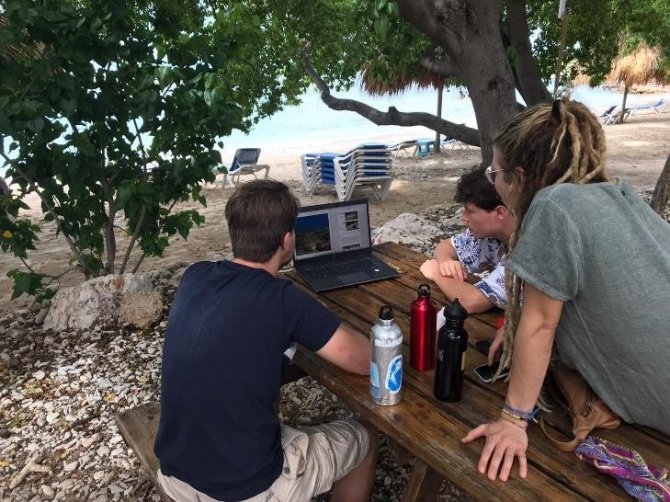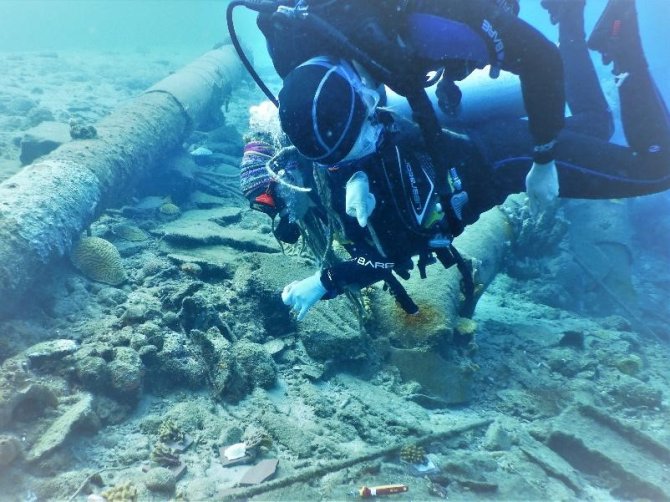
News
News from the Curacao expedition
A team of MAE students led by Erik Wurz has travelled to Curacao to do some fieldwork again. Read the blog post of student Pauline below to get updated on the project.
The sea is blue, the weather is warm, and the birds are singing. This is Curacao. The Caribbean island has a lot to offer; above as well as under water. Colourful coral reefs can be found everywhere which attract tourists, while the locals profit from the diverse variety of fish. Nevertheless, even this paradise is not excluded from the worldwide coral reef crisis. Global warming, increased nutrient input and anthropogenic impacts lead to a steady decline of reefs with effects on marine biodiversity and the food security of the island's population.
As a Bijvak student I got the great opportunity to accompany the Marine
Animal Ecology Group of the WUR. On the one hand we get lectures from our supervisor Erik about scientific work under water. It helps to work effectively and teaches us about safety. On the other hand we conduct our own research. The aim is to investigate to what extent degraded reefs, mainly covered with algae, are still productive. Is sunlight energy fixed by primary producers, such as algae and corals, still brought to higher trophic levels to sustain secondary producers, such as fish? Can corals or algae make better use of light, depending on depth and how does this affect fish biodiversity? Many questions we are trying to address and the more we ask, the more questions arise! But step by step.
After coffee, breakfast and a morning meeting we prepare our equipment
and start our working day. With a respiration chamber we dive down and incubate turf algae or corals to measure their oxygen production. The data obtained will then help us to calculate the carbon production. The chambers remain in the water for about 4 hours and in a second dive they are retrieved and analysed. Light sensors document the intensity of light during this time. While the incubations are running we film parts of the reef to create 3D models and prepare or collect organisms for future measurements. A self-made cage protects both the algae and the corals
from the fish that swarm around us. We have already learned the species and can hardly wait to start counting them, to calculate their secondary productivity. Therefore, I can only say thank you to the Marine Animal Ecology Group for giving me the opportunity to participate in your research and dive into this adventure!

